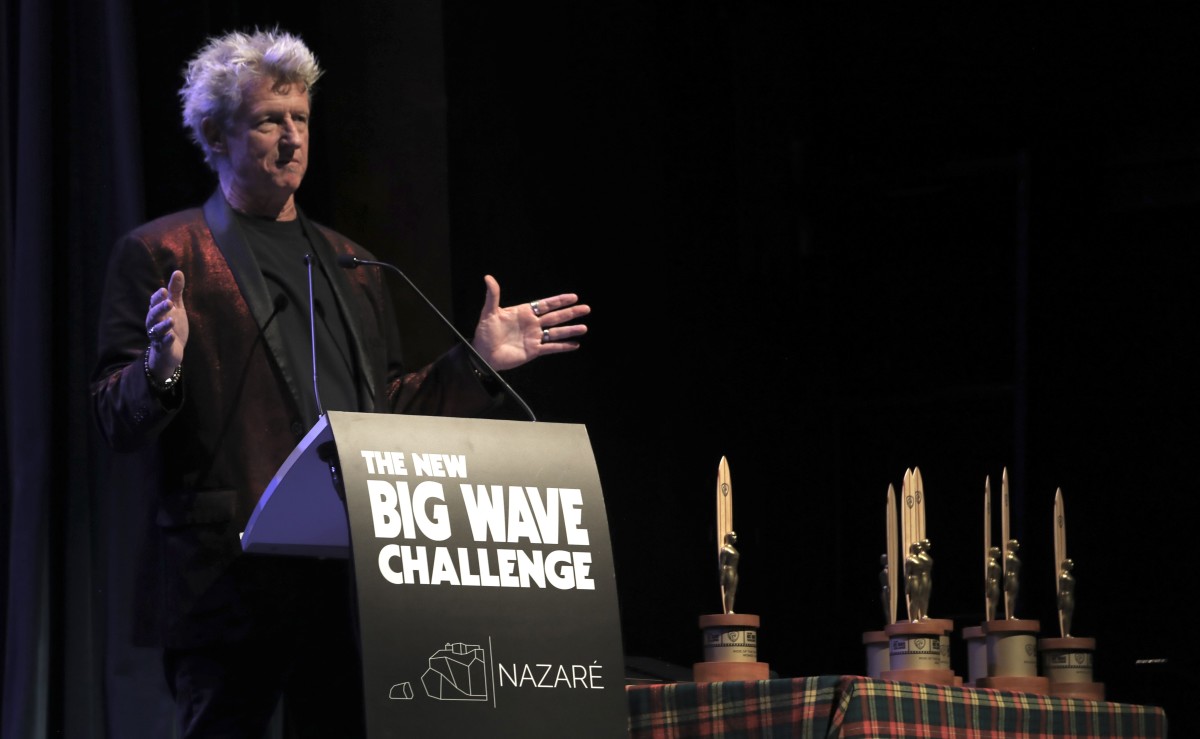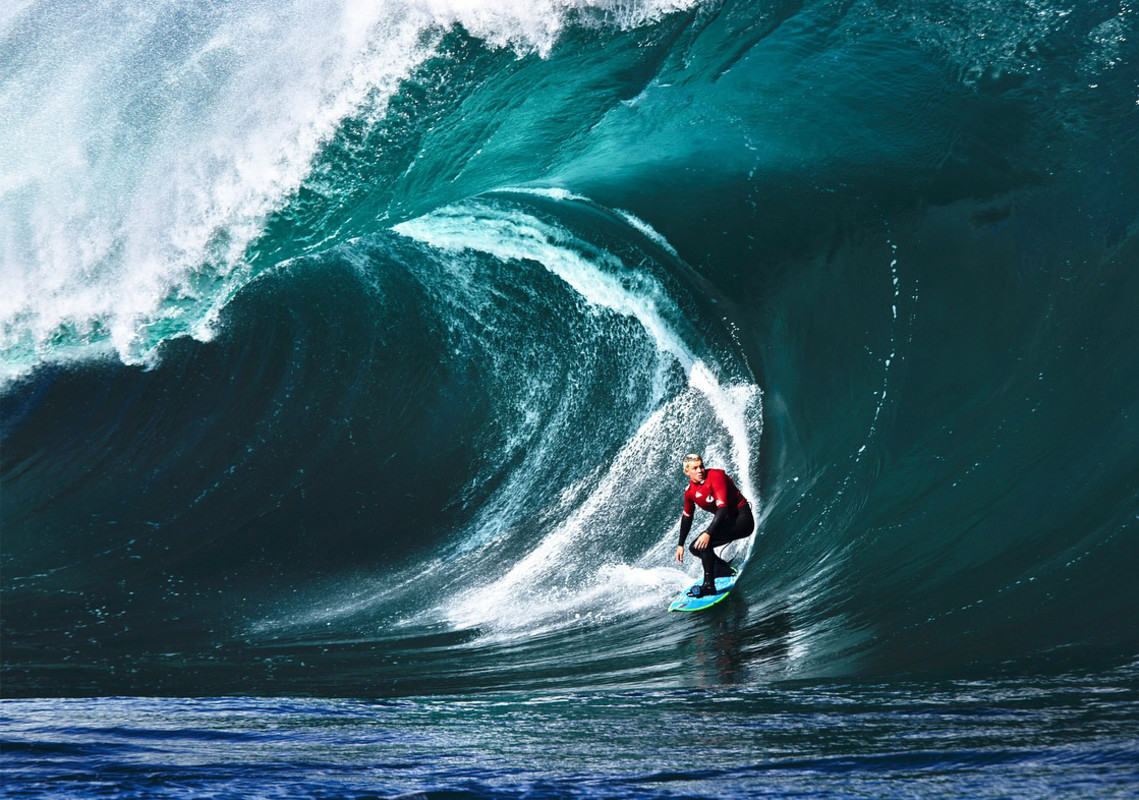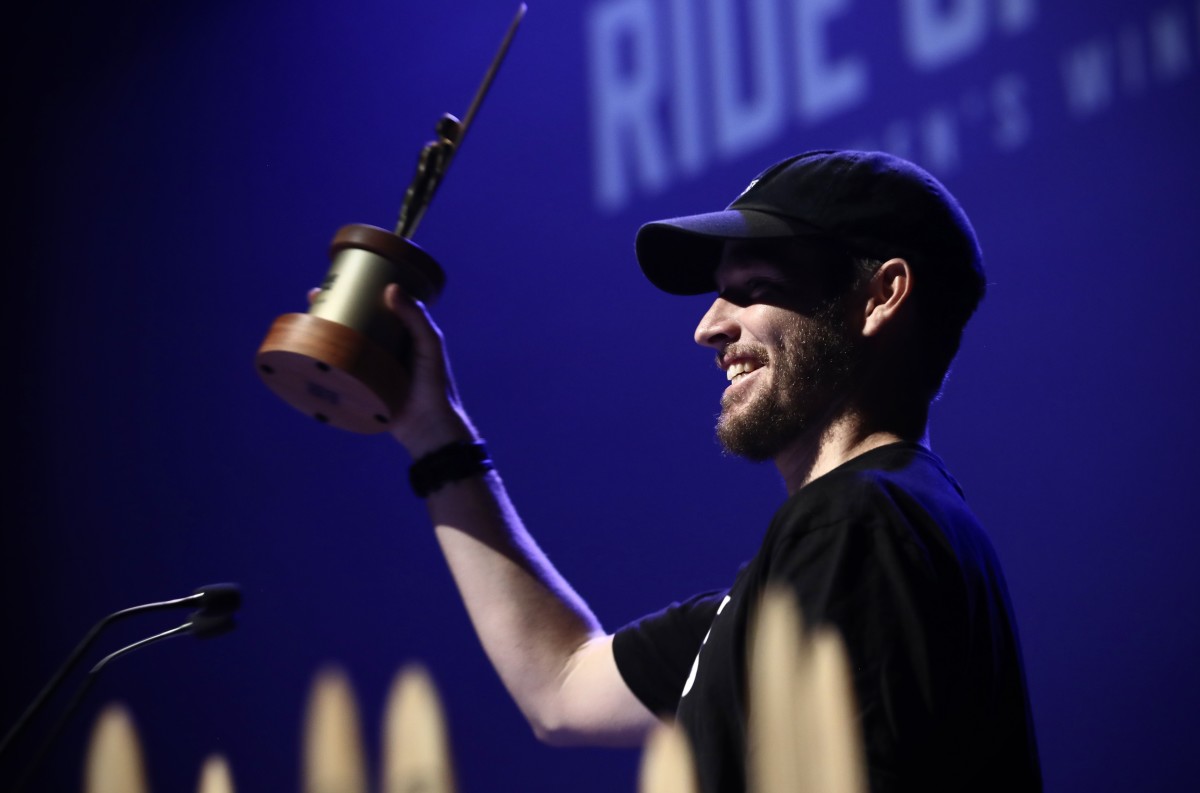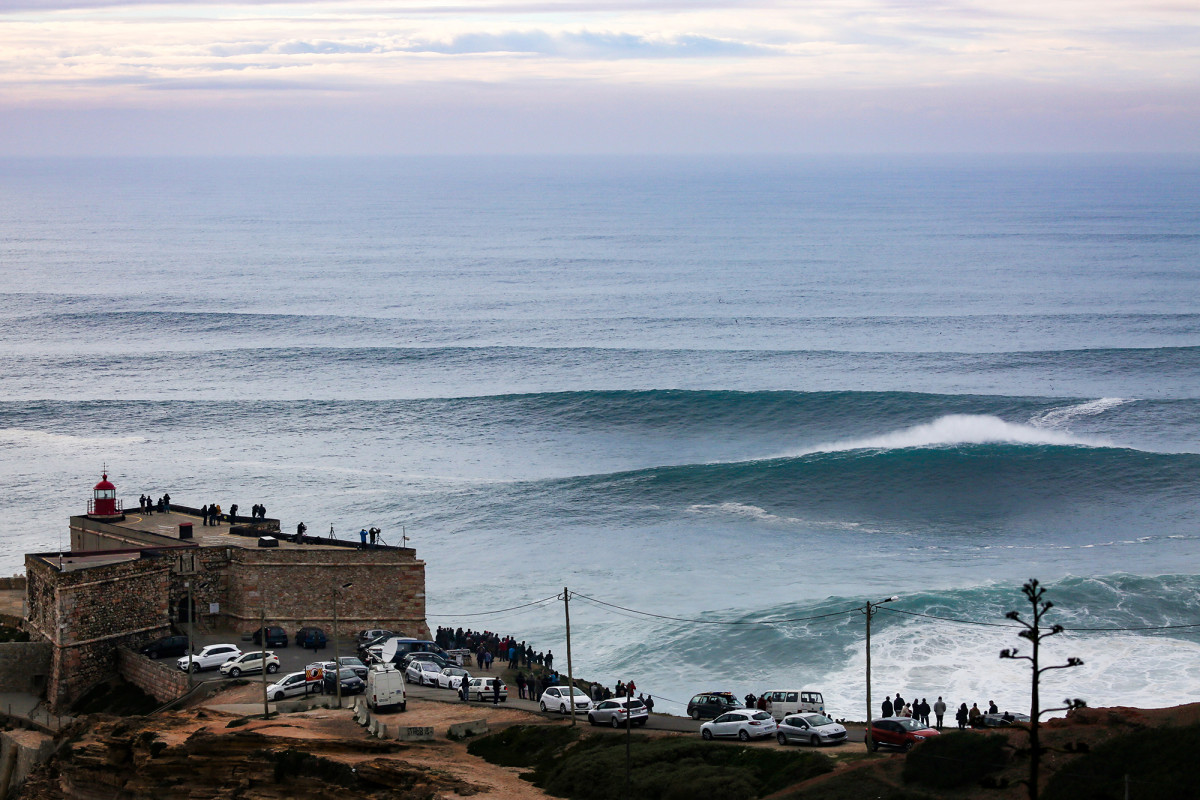
Big Wave Challenge
“Tireless bottle-blond jack-of-all-trades from Newport Beach, California,” was Matt Warshaw’s highly accurate opener for the Encyclopedia of Surfing’s bio on Bill Sharp. Sharp was a former Surfing magazine editor in the late 1980s, and the creator of the K2 Big-Wave Challenge. That was an innovative biggest wave competition where one winner took the $50,000 prize, a huge sum back in 1998. That competition would morph into the XXL Big Wave Awards. They ran for almost 20 years, initially with Billabong’s support and since 2015 under the WSL’s umbrella.
Sharp finished his contract with the WSL in 2020 and popped up as “The Explainer” on HBO’s 100-Foot Wave series. In August 2023, he launched the New Big Wave Challenge (NBWC), a resurrection of the XXL Awards. Now with SURFER’s backing and $150,000 in prize money, the Big Wave Challenge is back as a permanent fixture on the world surfing calendar.
We caught up with Sharp recently to ask about the return of the BWC and the important role it plays in the big wave community.

Cody Bates / Big Wave Challenge
Why the SURFER Big Wave Challenge (BWC) and why now?
The Big Wave Awards seemed to have been shelved by the WSL, so there was no central focus for big wave surfing. I’d always seen those awards as the town square where everyone would come and show what they were up to, exchange ideas and have a central hub. Last August, I just went, ‘well no one else is doing it, so I’ll just re-create that space.’ When SURFER came on board, which is one of surfing’s great heritage media brands, it felt like the perfect fit.
How different is this new platform or concept from the previous XXL and Big Wave Awards?
The original awards were devised as an annual tracking of the excellence of the sport and to create champions and recognition. I wanted to do something similar, but provide a fresh start and let the athletes and filmers, who are my friends and my community, have a space to show their incredible feats. That community wasn’t getting any attention and it seemed no one had the initiative to devote their life to it. There were no sponsors for this first edition, but I wanted to show the proof of concept and that there were enough people behind it to get the ball rolling again. Now we are starting properly with some prize money and it feels like the start of something new and exciting.

Big Wave Challenge
How important is the prize money aspect of it?
It’s important in that this is the first fresh investment in big wave surfing in a long time. None of these big wave surfers are doing it to win the prize money. They are doing it firstly for the love, and then they have their own deals going on, with sponsors and their personal channels. But to get a trophy and another chunk of cash, in front of their peers is pretty cool. As I said, it’s more about the opportunity for the big wave surfers and the content creators to be acknowledged for excellence in every category.
Is there room for growth? Can you see it getting back to the XXL heights?
Look it’s a whole new world. The surf industry and surf media were a money pump that funded the launch of the XXL awards. At one stage we had 2000 people in a room that had flown in from all over the world drunk out of their mind, with the Foo Fighters playing and Greg Noll mooning the audience. So I’m not sure it will ever be like that again, but we had continuity with this concept from 2000, and we’d lost that. So this is an adaptable format that can change with how the big wave community wants it to be. However, I know for a fact that there is a mainstream audience that finds big-wave surfing fascinating. The stories of the surfers are so compelling.

Estrelinha/Big Wave Challenge
Another change is the arrival of Nazaré as a big-wave hub. Why did you choose it as the venue for the Awards Night?
In those good old days, every brand would send their riders to California. Those days are done. So I had to find a place where the most number of big wave riders were in one place. And that’s Nazaré in October. To me, Nazaré in the early season each year is totally reminiscent of the North Shore in the 1970s and ’80s when Oahu was the centre of the surfing world each winter. Everyone went for the whole season, events or not. That camaraderie is what’s happening in Nazaré now. The surfers turn up, surf together, train together and eat together. Kammies Market is now Restaurant Celeste.
And what’s the grand plan?
I’ve been talking with Greg Long and the Big Wave Risk Assessment Group about the potential of doing a two-day safety summit in the lead-up to the event in Nazare. Lots of people are making inroads all over the world in terms of big wave safety, but they tend to do it separately and on their own patches. I see this as a rare chance to get all the best experts in the world and establish what the best practice is. However, the main goal is to have the BWC as the place where surfers, content creators, fans and sponsors all meet. The goal after that is not to make it ten per cent better, but ten times better, and see if we can reach its full potential. The surfers who dedicate their lives to it and the fans deserve it.

